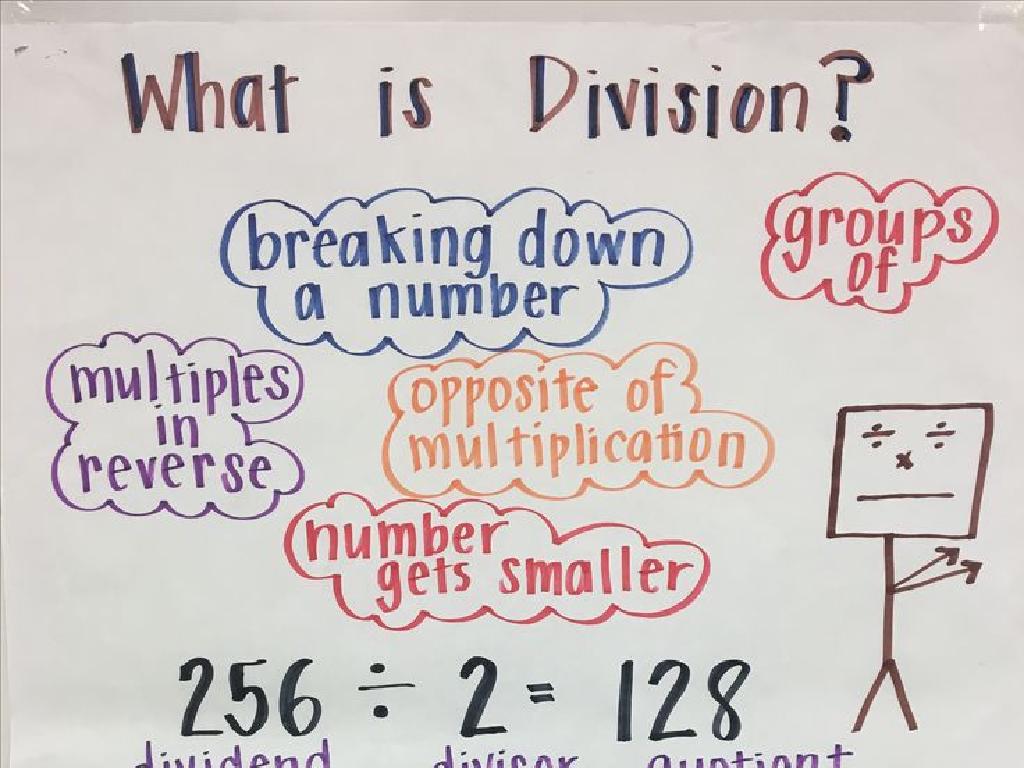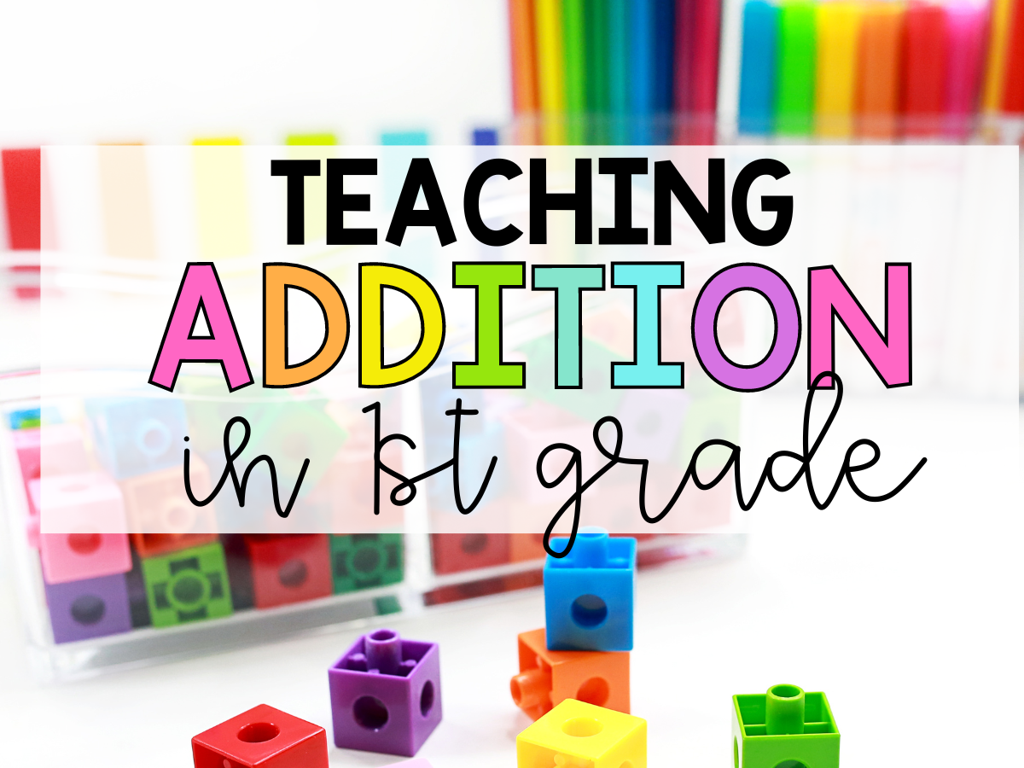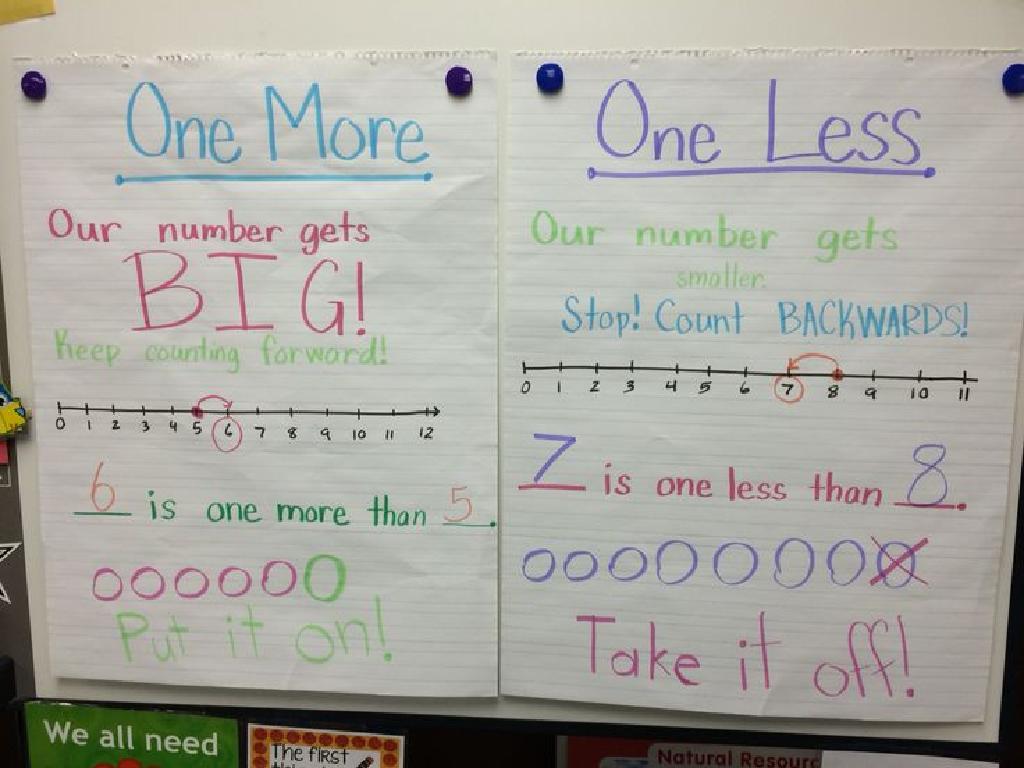Irregular Past Tense: Review
Subject: Language arts
Grade: Sixth grade
Topic: Verb Tense
Please LOG IN to download the presentation. Access is available to registered users only.
View More Content
Irregular Past Tense Verbs Overview
– Understanding verb tenses
– Defining irregular past tense verbs
– Verbs that don’t follow standard ‘-ed’ ending
– Contrasting irregular vs. regular verbs
– Regular verbs end in ‘-ed’; irregulars vary
– Significance of irregular verbs
– Essential for correct verb usage in writing and speaking
|
This slide introduces the concept of verb tenses, focusing on the past tense and specifically irregular past tense verbs. It’s important to explain that while most verbs in English take an ‘-ed’ ending to form the past tense, irregular verbs do not follow this pattern and instead have unique past tense forms. Examples include ‘go’ becoming ‘went’ and ‘buy’ becoming ‘bought’. Understanding these is crucial for students as they encounter them frequently in both written and spoken English. The slide should set the stage for further exploration of irregular verbs, including recognition and correct usage in sentences. Provide a list of common irregular verbs for students to memorize and use in practice exercises.
Regular vs. Irregular Verbs
– Review regular past tense verbs
– Regular verbs end in -ed, e.g., ‘walk’ becomes ‘walked’
– Patterns in regular verbs
– Regular verbs often follow a predictable pattern, such as ‘talk’ to ‘talked’
– Irregular verbs introduction
– Irregular verbs do not follow the -ed pattern, e.g., ‘go’ becomes ‘went’
– Irregular verbs lack simple patterns
– Irregular verbs must be memorized as they don’t have a set formula
|
Begin with a quick review of regular past tense verbs, emphasizing the addition of -ed to the base form. Highlight the patterns found in regular verbs to reinforce the concept. Then, introduce irregular verbs by explaining that they do not follow the same pattern and often change completely when forming the past tense. Provide examples of irregular verbs and encourage students to recognize that these verbs do not have a simple formula and must be memorized. Use a variety of examples to illustrate the concept and prepare exercises for students to practice identifying and using both regular and irregular past tense verbs.
Irregular Past Tense Verbs
– ‘Go’ changes to ‘Went’
– ‘Buy’ becomes ‘Bought’
– ‘Teach’ turns into ‘Taught’
– ‘Think’ transforms to ‘Thought’
|
This slide is focused on reviewing irregular past tense verbs, which do not follow the standard ‘-ed’ ending rule. Highlight the importance of memorization and frequent practice as these verbs do not adhere to a single pattern. Provide additional examples and encourage students to come up with sentences using these verbs in the past tense. Discuss common mistakes and correct them in real-time to reinforce learning. Have students work in pairs to quiz each other on additional irregular verbs not covered in the presentation.
Grouping Irregular Verbs
– Verbs changing vowels: Sing to Sang
– ‘Sing’ becomes ‘Sang’, vowel ‘i’ changes to ‘a’
– Verbs changing completely: Go to Went
– ‘Go’ transforms to ‘Went’, no resemblance to original
– Verbs staying the same: Cut remains Cut
– ‘Cut’ doesn’t change at all, both present and past are ‘Cut’
|
This slide aims to help students recognize and categorize irregular verbs based on their changes from present to past tense. Some irregular verbs change their vowel when moving to past tense, like ‘sing’ to ‘sang’. Others might change completely, offering no clear pattern, such as ‘go’ to ‘went’. There are also those that stay exactly the same in both tenses, like ‘cut’. Encourage students to come up with more examples for each category and to understand that irregular verbs do not follow the regular ‘-ed’ ending pattern. This understanding is crucial for mastering past tense usage in writing and speaking.
Using Irregular Verbs in Sentences
– Forming sentences with irregular verbs
– Irregular verbs don’t follow a set rule, e.g., go – went, not ‘goed’
– Using context to choose verb forms
– Words around the verb give hints on past tense usage
– Practice constructing sentences
– Let’s create sentences with verbs like ‘write, wrote’ and ‘see, saw’
|
This slide aims to help students understand how to correctly use irregular verbs in sentences. Unlike regular verbs, irregular verbs do not follow a standard pattern when changing to past tense. Provide examples of irregular verbs and their past tense forms. Emphasize the importance of context in determining the correct form of the verb to use. Engage students with practice exercises where they construct sentences using a list of irregular verbs. Encourage them to use contextual clues to ensure they are using the correct past tense form. This activity will reinforce their understanding and help them recognize patterns in irregular verb usage.
Irregular Verb Story Time
– Craft a story with irregular verbs
– Use past tense forms like ‘sang’, ‘went’, ‘wrote’
– Grasp verb tense in narratives
– Tense consistency makes the story understandable
– Exchange stories in groups
– Share with peers to learn from each other
– Reflect on the experience
|
This activity is designed to reinforce the understanding of irregular past tense verbs through creative storytelling. Students will create their own stories, using a list of irregular verbs in the past tense, to practice and demonstrate their grasp of verb tenses. Emphasize the importance of maintaining consistent verb tenses to convey the timeline of events clearly. After writing, students will break into small groups to share their stories, providing an opportunity for peer learning and feedback. Encourage active listening and constructive criticism within groups. Conclude with a reflection session where students discuss what they learned about verb tenses and storytelling.
Class Activity: Verb Detective
– Find irregular past tense verbs
– Look for verbs that don’t follow the regular ‘-ed’ ending pattern
– Pair up for discussion
– Share your verbs and see if your partner found the same ones
– Compare findings with your partner
– Discuss why these verbs are irregular and how they differ from regular verbs
– Class discussion on usage
– We’ll talk about how each verb was used in the paragraph
|
This activity is designed to reinforce the students’ understanding of irregular past tense verbs. Provide a paragraph rich in irregular verbs for the students to analyze. Encourage them to work in pairs to foster collaborative learning. After they have identified the verbs, facilitate a class discussion to review their findings and correct any misconceptions. This will also be an opportunity to delve deeper into the usage of these verbs in different contexts. Prepare to offer examples and explanations to guide the students through the irregularities of past tense verb forms.
Quiz Time: Irregular Past Tense Verbs
– Test your knowledge with a quick quiz
– Fill in the blanks with correct verbs
– Use verbs from our lesson to complete sentences
– Review answers together in class
– Clarify any confusing points
– Discuss why certain verbs are irregular
|
This slide introduces a classroom activity designed to review irregular past tense verbs. The quiz should include sentences with missing verbs that students must fill in using the correct irregular past tense forms. After completing the quiz, go over the answers as a class to ensure understanding and address any misconceptions. Use this opportunity to reinforce the lesson and clarify why some verbs do not follow regular past tense rules. Encourage students to ask questions and provide examples to illustrate the correct usage of irregular verbs. Prepare a list of common irregular verbs and their past tense forms for reference during the review.
Wrapping Up: Irregular Past Tense Verbs
– Recap of irregular past tense verbs
– Reviewed how irregular verbs don’t follow standard rules
– Practice is key to mastery
– Regular practice helps memorize these unique forms
– Homework: 10 sentences with irregular verbs
– Use different irregular verbs in each sentence
|
As we conclude today’s lesson, remind students of the key points about irregular past tense verbs and their unique forms that don’t follow the regular ‘-ed’ ending pattern. Emphasize the importance of regular practice to internalize these exceptions, as rote memorization is often necessary. For homework, students should write 10 sentences, each incorporating a different irregular past tense verb. This will help reinforce their understanding and provide practice in a written context. Encourage creativity and the use of a variety of verbs to ensure a broad understanding. In the next class, be prepared to review some of these sentences to correct and discuss as a group.






